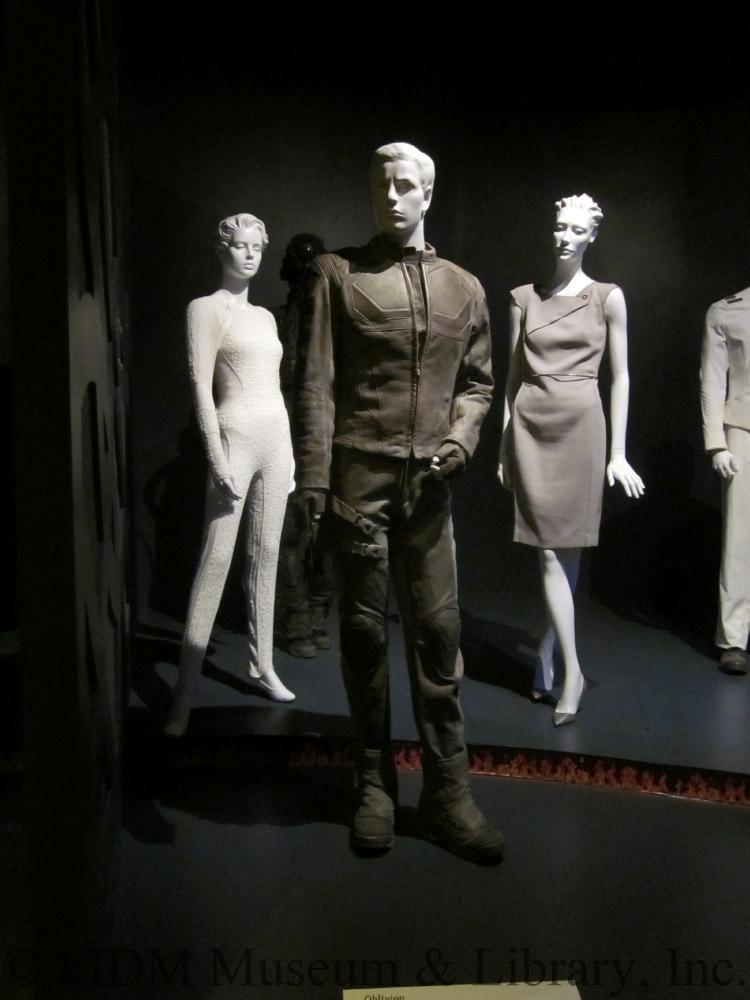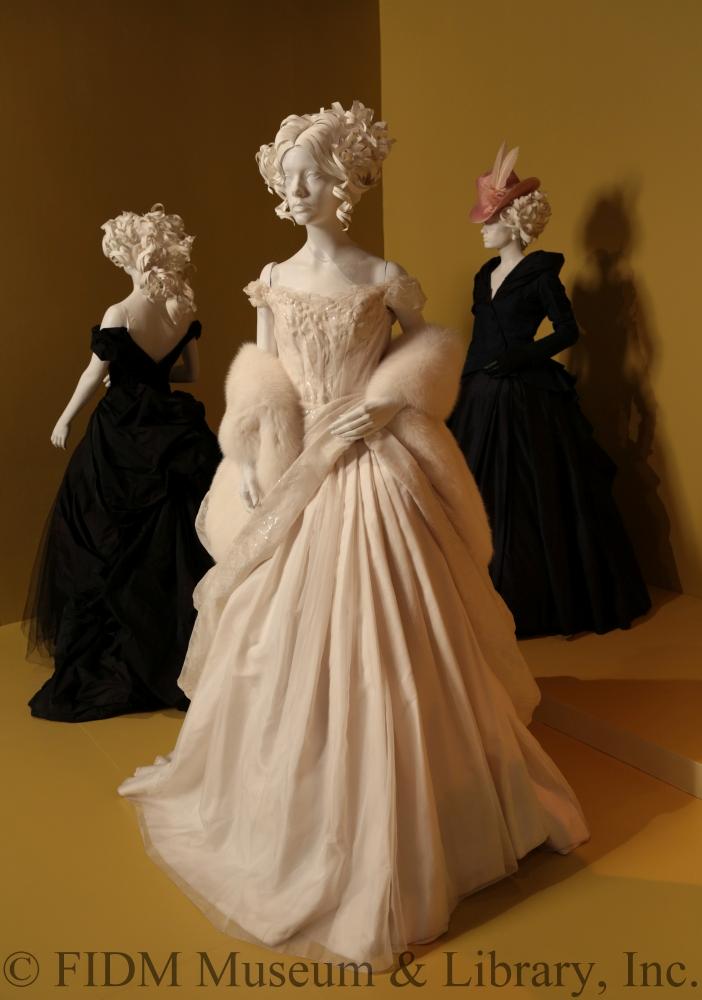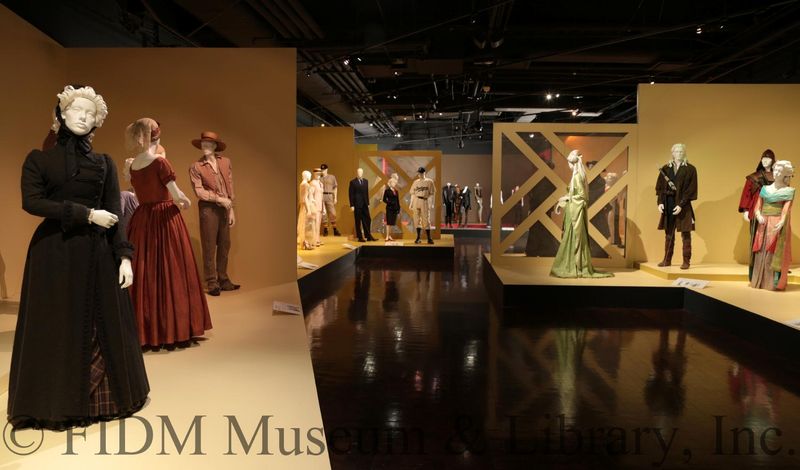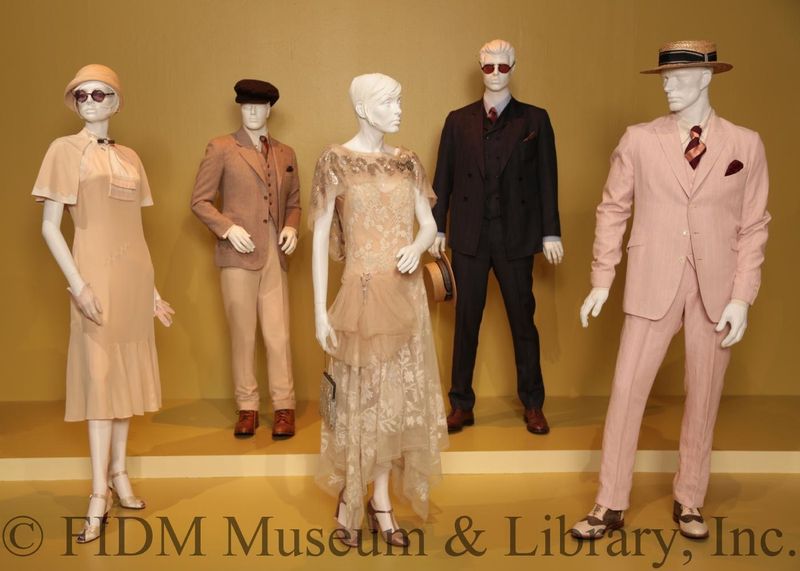Today we bring you the final installment in Registrar Meghan Hansen's three-part series on producing the Art of Motion Picture Costume Design Exhibition. Today's post answers one of the most common questions about this annual exhibition: “Is [insert name of famous actor] really that short/tall/thin/large?” Thanks to Meghan for sharing her insights on the planning and teamwork required to get this (or any) exhibition up and running!
**********
The final phase of exhibition installation is both creative and administrative. The mannequins are dressed according to reference images provided by the costume designer, studio, or production office; we also make proficient use of the Internet Movie Database (IMDB.com) and other internet sources. As Museum Registrar, I keep all of these resources organized according to the needs of the installation team. This year we had three tablets loaded with all available reference images and condition reports, so that anyone dressing a mannequin could refer back to this vital information. Since, as a rule, we are interpreting the costumes as they were seen in the film; we do not allow ourselves very much creative license. As each ensemble is dressed, I review the reference images and condition reports to finalize the styling and be sure that costume elements were not forgotten.
 At center, this costume designed by Marlene Stewart for Tom Cruise’s character Jack in Oblivion features a futuristic motorcycle-style jacket. Zipped or unzipped? Reference images, designer feedback, and the realities of a large-chest mannequin led to the decision to leave it unzipped. Loan courtesy of NBC Universal Studios.
At center, this costume designed by Marlene Stewart for Tom Cruise’s character Jack in Oblivion features a futuristic motorcycle-style jacket. Zipped or unzipped? Reference images, designer feedback, and the realities of a large-chest mannequin led to the decision to leave it unzipped. Loan courtesy of NBC Universal Studios.
One of the most common questions I am asked during the Art of Motion Picture Costume Design exhibition is, “Is [insert name of famous actor] really that short/tall/thin/large?” Our visitors are always fascinated by costumes because of their close relationship to the body, since clothing is something we can all relate to. It’s part of our everyday existence. By seeing the costumes worn by an actor for his role in a film, the actor becomes a little more real to the visitor. It is important to keep in mind that the costume is made for the character, first and foremost, to the specifications needed by the actor. So, yes, in most cases the actor is that short/tall/thin/large. In a small number of cases, the mannequin that will fit the costume in all other measurements may be, in fact, a few inches too tall—a common problem with the fashion mannequins we have in our stock.
 Keira Knightley’s costumes for Anna Karenina, designed by Jacqueline Durran, are typical of the actress’ small frame. We use a “pre-teen”-sized mannequin and raise her to the correct height with a small platform. Thank goodness for long skirts! Loan courtesy of NBC Universal Studios.
Keira Knightley’s costumes for Anna Karenina, designed by Jacqueline Durran, are typical of the actress’ small frame. We use a “pre-teen”-sized mannequin and raise her to the correct height with a small platform. Thank goodness for long skirts! Loan courtesy of NBC Universal Studios.
The gallery design and mannequin placement is a collaborative process with the Gallery Director, Museum Coordinator, and curatorial staff. There is a long list of variables we have to consider for placement – including traffic flow, visibility, character and plot, as well as visual harmony. The gallery was divided into a two theme/two room layout for this year's exhibition—Sci-Fi/Fantasy and Period films. Based on this general layout, we place the mannequins on the platforms in their estimated locations. Some were moved and rearranged, for instance the costumes for 42, designed by Caroline Harris. Since the film title is based on the number of Jackie Robinson’s jersey, we wanted the “42” to appear prominently in the gallery. However, it was strange to have his back to the audience. We discussed and experimented with several arrangements until one clicked—the Dodger’s uniform worn by Chadwick Boseman was placed at the end of a platform extension, allowing it to be seen from front, back, and the side.
 Costumes from 42, designed by Caroline Harris. Loan courtesy of Legendary Films.
Costumes from 42, designed by Caroline Harris. Loan courtesy of Legendary Films.
 The 42 Dodger’s uniform is at center of this gallery view. The “42” on the back of the jersey can be seen as the visitor walks from the Sci-Fi/Fantasy gallery into the Period section.
The 42 Dodger’s uniform is at center of this gallery view. The “42” on the back of the jersey can be seen as the visitor walks from the Sci-Fi/Fantasy gallery into the Period section.
After the installation is complete, I do the necessary insurance paperwork and organize my binder to be put aside until we begin de-install. We all attend the opening gala, which is a great reward for all the hard work and long hours that were necessary to make the exhibition a reality. After the crowds go home and we return to our desks, the Museum Coordinator, Michael Black, begins planning next year’s exhibition!
 The 2013 Academy Award Winner in Best Costume Design, Katherine Martin for The Great Gatsby, will be asked to return for next year’s 23rd Annual Art of Motion Picture Costume Design exhibition. Loan of courtesy Warner Bros. Pictures.
The 2013 Academy Award Winner in Best Costume Design, Katherine Martin for The Great Gatsby, will be asked to return for next year’s 23rd Annual Art of Motion Picture Costume Design exhibition. Loan of courtesy Warner Bros. Pictures.

